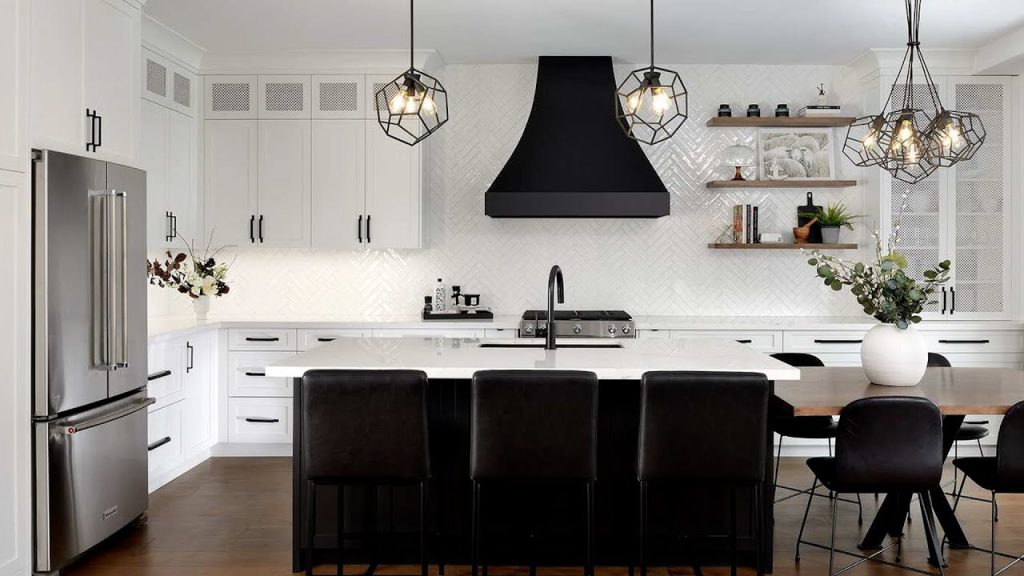Key Takeaways
- Understanding different types of lighting can transform your home’s ambiance.
- Proper lighting enhances functionality and aesthetics in every room.
- Consider energy efficiency and sustainability when selecting fixtures.
- The right fixture height and size are crucial for balanced lighting.
- Layered lighting adds depth and versatility to your spaces.
Table of Contents
- Different Types of Lighting
- Choosing Lighting For Different Rooms
- Energy Efficiency and Sustainability
- Selecting the Right Height and Size
- Layering Your Lighting
Different Types of Lighting
Understanding different types of lighting is crucial for creating the perfect ambiance in your home. The main categories are ambient, task, and accent lighting. Ambient lighting provides overall illumination, task lighting is designed for specific activities, and accent lighting highlights features or decor elements.
Choosing Lighting For Different Rooms
Every room in your home has unique lighting needs that reflect its use and ambiance. A combination of overhead and floor lights in living rooms can create a cozy evening while catering to brighter social gatherings. Consider using dimmable recessed lighting or a statement chandelier for a versatile setup. Floor and table lamps in seating areas can provide additional light sources for reading or intimate conversations. Kitchens require bright, task-oriented lights to ensure safety and functionality during food preparation. Overhead fluorescent or LED fixtures can provide general illumination, while under-cabinet lights help to illuminate workspaces more directly. Pendant lights over islands or countertops can add a decorative focal point while serving a functional purpose. Bedrooms benefit from softer, ambient lighting that promotes relaxation. Ceiling fixtures with a dimming option can adjust the light level according to different activities. Bedside lamps offer directed light for reading without disturbing a sleeping partner. Consider wall-mounted sconces to free up space on nightstands. In bathrooms, especially around mirrors, task lighting is crucial for grooming tasks like shaving or applying makeup. Vanity lights on either side of the mirror prevent shadows on the face, ensuring even illumination. Overhead lights can supplement the vanity lighting, ensuring the room is well-lit.
Energy Efficiency and Sustainability
With growing environmental concerns, selecting energy-efficient and sustainable lighting options is increasingly important. LED bulbs, for example, consume up to 90% less power than traditional incandescent bulbs and last significantly longer. This means fewer replacements and lower overall energy consumption, which benefits your wallet and the environment. Incorporating such fixtures reduces your energy bills and minimizes your carbon footprint, making it a win-win situation for homeowners looking to make sustainable choices. Investing in energy-efficient lighting benefits the environment and is cost-effective in the long run. Many modern lighting solutions are designed with energy efficiency in mind, offering maximum illumination with minimal energy usage. This change can lead to significant savings on your power bills over time. For more detailed advice, the U.S. Department of Energy offers extensive guidelines on choosing energy-efficient lighting to help you make informed decisions.
Selecting the Right Height and Size
Your lighting fixtures’ correct height and size can significantly impact a room’s overall effect and balance. For instance, chandeliers or pendant lights above dining tables should be hung approximately 30 to 34 inches above the surface to create a well-proportioned look that is manageable. This height allows for sufficient lighting while maintaining comfort and visibility during meals. Fixtures that are too small can look out of place or fail to adequately light the space, while oversized lights might dominate and overwhelm a room. Always measure your room dimensions and consider ceiling height to ensure a balanced look that complements your home’s architecture and interior design. When selecting fixtures, consider the room’s dimensions and ceiling height. More substantial light fixtures make a bold statement for larger rooms, while smaller rooms require delicate, proportionate lighting to avoid overpowering the space.
Additionally, considering the fixture’s purpose can help select the correct size. Chandeliers can add a touch of elegance to a dining room, whereas pendant lights work well over kitchen islands where functionality meets style. Floor lamps can fill out empty corners and add both light and aesthetic appeal.
Layering Your Lighting
Layering your lighting involves combining different light sources to create a versatile and dynamic environment. Use ambient lighting as your foundation to provide general illumination for an entire room. This can be achieved through ceiling, recessed, or floor lamps. Add task lighting for functionality, such as reading by the sofa, under-cabinet lights in the kitchen, or desk lamps in your home office. Task lighting is designed to help you perform specific tasks more efficiently, providing direct, focused light where needed most. Finally, finish with accent lighting to add character and style. Accent lighting highlights artwork, architectural features, or decorative objects, adding depth and interest to the room. This can be achieved through track lights, wall sconces, or spotlights. A well-lit room isn’t just about brightness; it’s about creating depth and dimension. By layering light from multiple sources, you can achieve a functional yet aesthetically pleasing space that meets all your lighting needs. This approach allows you to adjust the lighting to suit various activities and moods, creating a balanced and harmonious environment.
Resources:
https://www.youtube.com/watch?v=XtyWt7PHZXM
https://www.visualcomfort.com/
https://www.quora.com/What-guidelines-should-I-follow-when-selecting-the-ideal-lighting-fixtures-for-my-living-room







